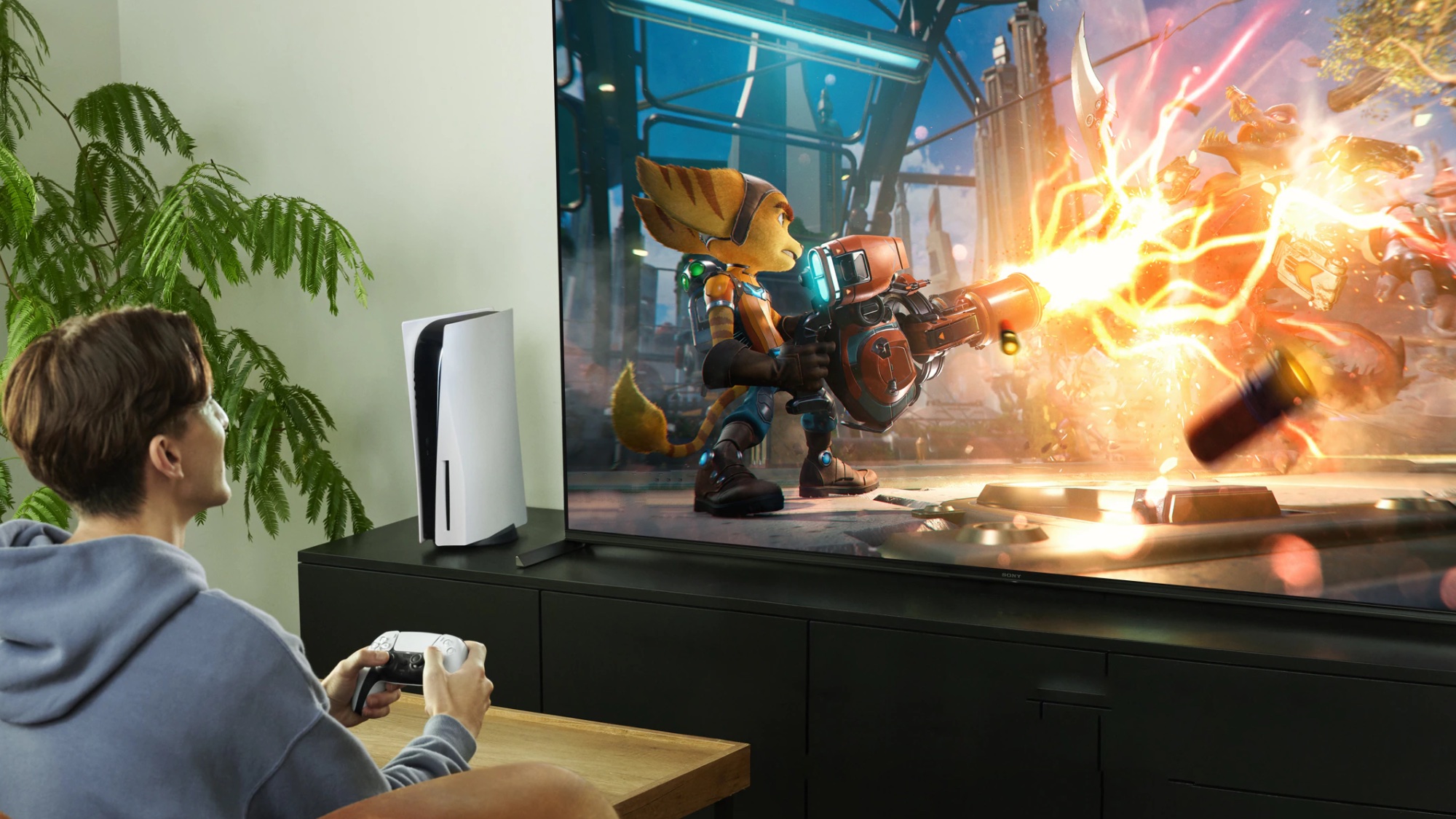What is Game Mode on TVs and should you use it?
Will Game Mode actually help your gaming performance?

If you're gaming on one of the best TVs, then you're likely experiencing your games in stunning, vibrant color with high refresh rates and great audio. But there's one feature that you might not be aware of, especially if it doesn't activate automatically. Most modern TVs have a Game Mode that's designed specifically to be used when you're playing video games.
What a Game Mode actually does, however, can seem a little vague. After all, your video games probably look pretty great already – but enabling Game Mode could make your gaming experience even better. Here's what you need to know about Game Mode and whether or not you should use it.
The LG C5 OLED is currently at the top of our list of the best gaming TVs. It has an absolutely stunning picture, a blazing-fast 144Hz refresh rate, Game Optimizer, and an incredibly low input latency of 9.1ms. And, the 65-inch model is half off.
What is Game Mode?
There are some settings and features built into your TV that are designed specifically to make gaming a better experience. Game Mode essentially tweaks these settings. For starters, when you enable game mode, your TV will prioritize a lower latency over things like image processing. To that end, it will bypass or at least limit some image processing technologies to ensure that latency is as low as possible — which means that there's less of a lag between you pressing a button on your controller and your character responding on-screen.
In some situations, the settings that are disabled are ones that you might want disabled anyway – like motion smoothing. Other settings which might be related to color depth or brightness are tweaked too. While in theory this could result in a lower image quality, in practice you're unlikely to notice much of a difference – Game Mode won’t, for example, limit HDR formats you can use. Most modern TVs can still fine-tune brightness and color accuracy perfectly well even with Game Mode enabled.
Basically, the ultimate goal of Game Mode is simply to reduce the time it takes for something to happen on the screen after you push a button on your controller.
If available on your TV, Game Mode might also enable technologies like variable refresh rate – though often these technologies will be enabled automatically when your TV detects a gaming console. It's also worth noting that Auto Low Latency Mode (ALLM) is a Game Mode that’s usually enabled automatically when your TV detects a gaming console – so if your TV has ALLM, you probably don’t need to worry about manually activating Game Mode.
When you should use Game Mode
Put simply, you should use Game Mode whenever you're playing a video game on your TV. This is true however you're playing, whether it be through a console like the PlayStation 5, a gaming PC, or a handheld system plugged into your TV's HDMI port.
Get instant access to breaking news, the hottest reviews, great deals and helpful tips.
Don't assume that Game Mode is only for ultra fast-paced games like first-person shooters either. Game mode can help your game feel more responsive even on slower story-driven games where input lag isn't as much of a factor. That, in turn, can help make games feel more immersive.
Game mode is even useful when you're not using a local console – and instead using a game streaming service like Xbox Cloud Gaming. These services introduce latency at the best of times, so minimizing that lag as much as possible can be hugely helpful.
When you shouldn’t use Game Mode
The obvious answer here is that you'll want to disable Game Mode when you're not actually playing a game. There are settings that won't be enabled in game mode, but that you might want enabled when you're watching a movie or TV show, like noise reduction and some HDR processing settings.
Game mode can also interfere with some more advanced features, like those that use brightness sensors to calibrate the TV's image based on the lighting in your environment.
Put simply, it's easy to know when you should and shouldn't use game mode. Use it when you're gaming, and don't when you're not.
How to enable Game Mode
The process for enabling Game Mode varies widely depending on your TV’s brand and model, but it’s almost always found within the picture or settings menu. On most TVs, you can access it by pressing the settings button on your remote, navigating to Picture Mode or General Settings, and selecting Game Mode or Game Optimizer. Different TVs label it differently.
Many newer TVs can automatically detect when a game console is connected and switch Game Mode on or off as needed. This feature is called Auto Low Latency Mode (ALLM), and it works with compatible devices like the Xbox Series X, PlayStation 5, and certain PCs. When you start playing, the TV automatically enables Game Mode to minimize lag, then switches back to your previous picture mode when you exit the game or switch inputs.
If your TV doesn’t support ALLM, you may need to toggle Game Mode manually, but most TVs remember your preference per input. That means you can set your console’s HDMI port to always use Game Mode.
More from Tom's Guide

Christian de Looper is a freelance writer who has covered every facet of consumer tech, including mobile, audio, home theater, computing, gaming, and even car tech. At Tom’s Guide, Christian covers TV and home theater tech, and has reviewed dozens of TVs, soundbars, and A/V receivers, including those from the likes of Samsung, Hisense, TCL, and Vizio.
You must confirm your public display name before commenting
Please logout and then login again, you will then be prompted to enter your display name.

